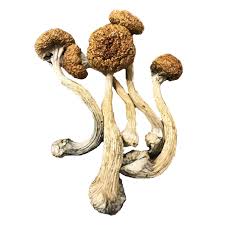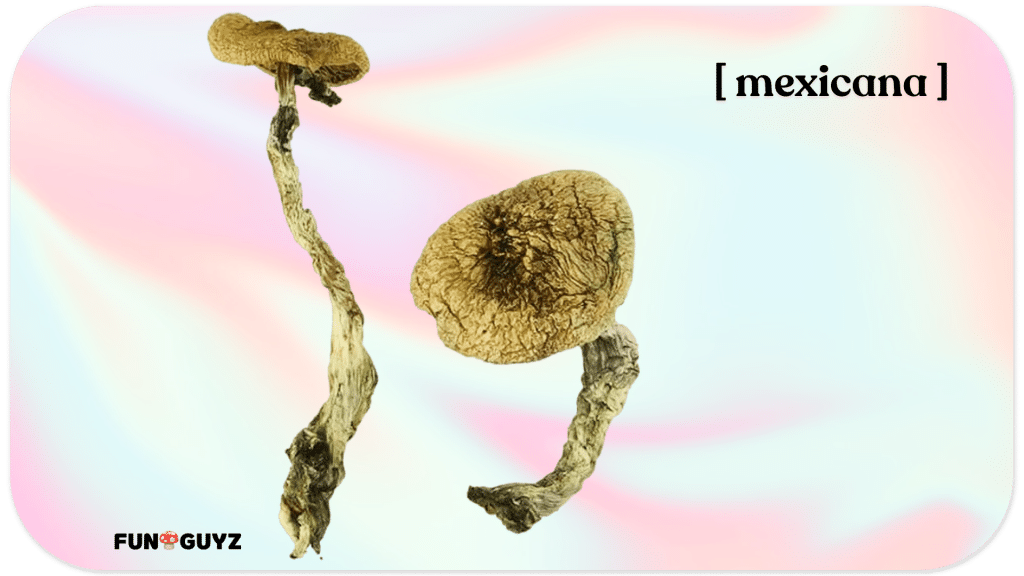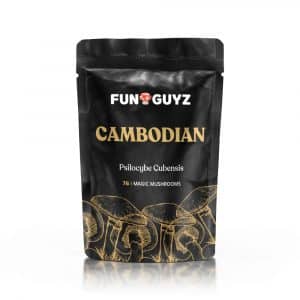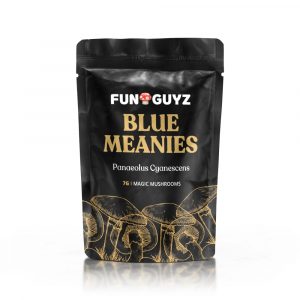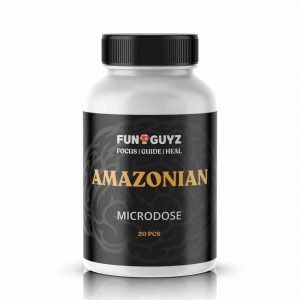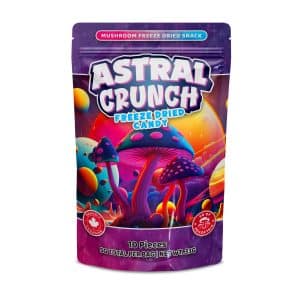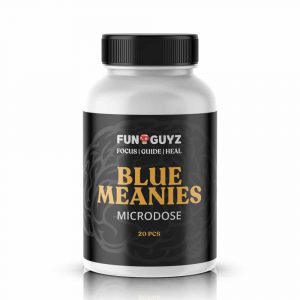No products in the cart.

Mexicana Magic Mushroom Strain
Buy Mexicana magic mushrooms, revered for centuries, are a testament to the country’s deep-rooted connection with the natural world.
Mexicana Shrooms in Detail:
They stand at the crossroads of ancient traditions and modern science, embodying a fusion of spiritual significance and biological wonder. Within the diverse ecosystems of Mexico, these fungi have flourished, shaping rituals and inspiring tales that resonate through time. Their story is a tapestry of nature’s potency and humanity’s quest for understanding, reflecting the enduring allure of Mexico’s mystical landscapes and the secrets they hold.
Mexicana Magic Mushroom Strain Specs
| Potency | Below Average |
| Cultivation | Beginner |
| Species | Plisocybe cubensis |
| Cost | $-$ |
| Rarity | ★ |
Understanding Psilocybe Mexicana
Description
Psilocybe Mexicana, known for its psychedelic properties, is a fascinating species. We’ll explore its physical characteristics to understand what sets it apart from other mushroom varieties.
These mushrooms typically have bell-shaped caps when young, which flatten with age. The cap’s color ranges from straw yellow to brownish, depending on moisture levels. They’re small in size, usually not exceeding two centimeters in diameter.
Their growth cycle begins with spore germination and ends at full maturity within a few weeks under optimal conditions. As they mature, the veil beneath the cap tears away — a unique feature of this species.
We find their smell earthy and taste slightly nutty — distinctive markers for those familiar with these fungi.
Habitat
Buy Mexicana magic mushrooms. Their naturally favor lush terrains where humidity reigns supreme. They thrive best in deciduous forests and grasslands rich in nutrients like manure.
The environmental conditions ideal for their growth include moist soil but not waterlogged areas; they need well-drained land to flourish. Their adaptability extends across various climates, though they prefer warmer regions.
They form symbiotic relationships with plant roots — a process vital for nutrient exchange that supports both organisms’ survival.
Regions like Central America are hotspots due to favorable climate conditions that support their growth cycles year-round.
Distribution
Mapping out the global distribution of Psilocybe Mexicana reveals an intriguing pattern influenced by both natural dispersal and human intervention over time.
Factors such as wind patterns contribute to spore spread across different territories, while human interest in psychedelic research has led to more deliberate cultivation efforts worldwide.
Countries like Mexico have long histories associated with these mushrooms; however, legal restrictions vary widely globally—with some places allowing possession for personal use while others impose strict bans on any interaction with psychedelics.
Shifts in distribution patterns often reflect changing societal attitudes towards psychedelics — sometimes expanding due to increased acceptance or contracting amidst legal crackdowns.
Psilocybin and Its Effects
Neurobiology
Understanding how Mexicana interact with our brains is crucial. These mushrooms contain psychoactive components, primarily psilocybin, which convert to psilocin in the body. We also add it into our premium psilocybin edibles, like magic mushroom chocolate bar or psilocybin gummies. This compound influences neurotransmitters, especially serotonin.
Psilocin binds to serotonin receptors. The effect can be profound changes in perception and thought. We may experience visual distortions or a sense of euphoria. However, these effects vary among individuals.
The potential therapeutic applications are exciting. Some studies suggest benefits for neurological and psychiatric conditions like anxiety or depression. Yet, we must consider risks too. Overuse could lead to altered mental states or addiction.
Mexicana magic mushrooms have unique neurobiological impacts compared with other psychedelics such as LSD or mescaline. Each has distinct chemical structures affecting the brain differently.
Therapeutic Targets
We’ve learned that Mexicana magic mushrooms might have therapeutic uses. Researchers are exploring their medicinal applications further. Studies show promise in treating mental health disorders like depression and PTSD. However, assessing safety is essential when considering them for therapy. Side effects can occur; hence monitoring during treatment is critical.
Breakthroughs in psychedelic-assisted therapy include controlled clinical trials using psilocybin to alleviate psychological distress associated with life-threatening diseases — highlighting its potential as a powerful tool for healing minds.
Biologic Effects
Discussing the biological impact of Mexicana magic mushrooms reveals both short-term and long-term effects on physical health. They interact with various bodily systems beyond just our brains. Short-term use typically causes mild physiological reactions such as nausea or increased heart rate. Long-term effects are less understood but could include persistent psychological changes or even organ damage from misuse.
Comparatively speaking, adverse reactions from Mexicana magic mushrooms seem less severe than those from synthetic substances like MDMA (Ecstasy) but still warrant caution due to variability between individual experiences — a reminder that what works for one person may not work for another.
Alkaloids in Magic Mushrooms
Characteristics
Mexicana magic mushrooms stand out for their distinct traits. These fungi are remarkable in how they adapt to different environments. They can thrive where others might not, showing a resilience that fascinates us.
Their growth patterns also catch our eye. Mexicana mushrooms tend to grow in groups, creating a visual spectacle. We’ve seen these clusters emerge with vigor after rainfalls or in humid conditions.
When we compare potency, Mexicana is often milder than other species like Psilocybe cubensis. Yet, this doesn’t dim its appeal among enthusiasts and cultivators alike.
Fast Facts on Psilocybin
Effects
Mexicana magic mushrooms, like other psilocybin-containing fungi, have profound psychoactive effects. When we consume them, our minds embark on a journey that can be both enlightening and challenging. The onset of effects typically begins within 20 to 40 minutes after ingestion. These experiences often peak around two hours and gradually taper off over the next four to six hours.
The intensity of these effects varies widely among individuals. If you are an experienced user and want more, we recommend trying dmt vape pen or browsing through other, more potent strains. A common experience includes enhanced sensory perception, such as vivid colors and sounds. Mexicana is somehow familiar to weed in terms of effects. Some of us may encounter deep introspection or feelings of connectivity with others and the environment. However, it’s crucial to acknowledge that Mexicana magic mushrooms can also lead to less desirable reactions such as anxiety or confusion.
Comparing these effects with other psychedelics reveals similarities in altered states of consciousness, but differences in duration and potency exist too. For example, LSD trips tend to last longer than those induced by Mexicana shrooms.
Understanding factors influencing individual experiences is essential for a safe journey with psychedelics. Our mental state before taking them plays a significant role in shaping our trip — hence why they’re sometimes referred to as good trip shrooms chocolate bars when combined with positive intentions.
Impact Factors
Several factors influence how Mexicana magic mushrooms impact us during use. Dosage is one key element; smaller amounts might induce mild changes in perception while higher doses could lead to intense hallucinations or spiritual experiences.
Method of use affects impacts too; consuming dried mushrooms versus an infused chocolate bar alters the experience due not only to dosage control but also due to additives that might be present in commercial products like shroom chocolate bars.
Individual physiology is another critical factor; some people naturally have higher sensitivity or resistance based on their body chemistry which can alter the psychedelic experience significantly.
Set and setting are vital components for any psychedelic adventure—the physical environment along with social surroundings contribute immensely towards shaping our overall experience whether it’s tranquil nature settings or vibrant music festivals.
Tolerance develops over repeated use, making subsequent trips less potent unless there’s an increase in dose, which isn’t recommended due to safety concerns related to potential risks associated with increased consumption levels.
7-28G Dried Mexicana Mushrooms
Mexicana, or Psilocybe mexicana, echoes an ancient history, tracing back over 2000 years to the Aztecs and Mayans. It’s not just a source of euphoria and vivid hallucinations; it offers more.
Here’s what sets Mexicana apart:
- It has a deep-rooted history, being the catalyst for psilocybin use in Western cultures.
- It offers a profoundly spiritual and visually stunning experience with minimal physical impact.
- It has a unique look and distinct effects.
There’s often confusion between Mexicana, Liberty Caps, and Teonanacatl. While Mexicana resembles Liberty Caps, they are different species. Our premium Mexicana magic mushrooms, which are also used in Mexicana magic mushroom microdosing capsules, come from Psilocybe mexicana, whereas Liberty Caps are Psilocybe semilanceata. Teonanacatl, also found in Mexico and known as the “divine mushroom,” is actually Psilocybe cubensis.
-
$60 – $190
Psilocybin in the Body
How It Works
Psilocybin, the active compound in Mexicana strain, has a unique interaction with our bodies. When we ingest these mushrooms, psilocybin is quickly absorbed into the bloodstream. Once it reaches our brain, it primarily affects serotonin receptors.
The mechanism of action starts when psilocybin is converted into psilocin. This chemical resembles serotonin and binds to its receptors. The binding alters normal neurotransmission, leading to changes in perception and thought.
Our experience shows that this process can lead to an altered state of consciousness. Colors may seem brighter, emotions more intense, or thoughts deeply profound. However, there are risks involved. If not used responsibly under guidance or proper settings, one might face confusion or distress.
Comparing Mexicana magic mushrooms with other psychedelics like LSD highlights similarities and differences in their effects on the mind and body. Both interact with serotonin receptors but have different durations and intensity of psychoactive effects.
Cardiovascular Toxicity
When discussing potential health concerns related to psychedelic use such as mexicana magic mushrooms, cardiovascular toxicity comes up frequently. These substances can impact heart rate and blood pressure unpredictably. In some cases—particularly for those predisposed — it could pose serious health risks. Yet current research suggests severe complications are rare among healthy users. To minimize cardiovascular toxicity risk while using these substances:
- Start with lower doses
- Avoid mixing them with other stimulants
- Be aware of personal health conditions
If adverse cardiovascular events occur during use:
- Remain calm; panic can exacerbate symptoms
- Seek immediate medical assistance
- Inform healthcare providers about substance ingestion
By understanding how Mexicana affect us physically and mentally—and taking precautions—we enhance safety during their use.
Extent of Use and Terminology
Usage Statistics
In recent years, we have observed a notable uptick in the use of Mexicana magic mushrooms. These natural psychedelics are gaining popularity not just among traditional users but also within broader demographics. Studies show that curiosity and the pursuit of spiritual experiences often drive this increase.
The statistics reveal interesting trends. For example, young adults are more likely to experiment with these substances compared to other age groups. This could be due to increased exposure through social media or a greater openness towards alternative states of consciousness.
They undoubtedly shape usage patterns. In regions where possession is decriminalized or legalized for medical purposes, there’s typically a rise in reported use. Conversely, strict laws can deter people but may also push usage underground.
Comparatively speaking, Mexicana magic mushrooms hold their own against other psychedelics like LSD or mescaline in terms of popularity. Each has its adherents who prefer one over the others for various reasons, including availability and desired experience.
- Current global trends indicate growing interest.
- Young adults lead as the primary demographic group.
- Legal landscapes significantly influence consumption rates.
- Mexicana maintains a comparable standing among psychedelics.
Other Notable Strains
-
$60 – $190
-
$60 – $190
Psilocybin as a Treatment Option
Depression Therapy
In our collective journey to understand mental health, we’ve encountered Mexicana. These fungi are known for their psychoactive properties. Many of us have heard stories or read about their use in depression therapy.
Research into Mexicana is growing. Scientists study how they might help those with depression. They look at the psilocybin compound in these mushrooms as a therapeutic tool. This substance could potentially reset parts of the brain affected by depression.
Safety is always our top concern when considering new treatments. We must evaluate possible side effects carefully. Some people report nausea or disorientation after using psychedelics like psilocybin. But many also share positive experiences.
Patients often speak of profound insights during psychedelic-assisted therapy sessions that aid their healing process from depression. Their testimonials can be moving and powerful, highlighting transformative moments that traditional medications did not provide.
We compare this approach to other treatments for depression regularly—antidepressants, therapy, lifestyle changes—and wonder if perhaps there’s room for more natural options like these mushrooms in mainstream medicine.
Potential Benefits
Beyond just treating depression, we’re intrigued by the potential benefits of mexicana magic mushrooms for personal growth and creativity enhancement:
- Studies suggest these fungi may foster open-mindedness.
- Users often claim they feel more connected to others and nature post-experience.
- There’s evidence pointing towards long-term positive changes in personality traits such as increased altruism and empathy.
The scientific community continues to evaluate these claims with rigorous research protocols to ensure the reliability and validity of findings on how psilocybin can benefit our minds beyond recreation.
Individual responses vary greatly, though—it’s not one-size-fits-all with psychedelics or any form of treatment really; what works wonders for one person may have little effect on another due to differences in brain chemistry, past experiences, expectations, and even set and setting during use.
Comparing Mexicana magic mushrooms benefits with other psychedelics shows similarities but also unique aspects tied specifically to psilocybin-containing varieties like increased feelings of peacefulness which some users find especially profound compared to LSD or MDMA experiences.
By acknowledging both the risks and rewards associated with psilocybin from Mexicana magic mushrooms as a treatment option for psychological conditions such as depression—as well as its role in enhancing creativity—we see it’s crucial that further research continues so we better understand where this ancient remedy fits within modern healthcare practices while ensuring patient safety above all else.
Conclusion
Through our exploration of Psilocybe Mexicana, we have gained a comprehensive understanding of its properties, effects, and potential as a therapeutic agent. The alkaloids present in these magic mushrooms, particularly psilocybin, play a pivotal role in influencing the human psyche and physiology. Our collective knowledge underscores the significance of psilocybin’s impact on the body and the growing interest in its use within medical treatments. The substance’s transformative capabilities warrant further study, especially considering its historical and cultural relevance.
We encourage readers to continue this journey of discovery by engaging with scientific research and contributing to the dialogue around psychedelic substances. This will foster a deeper appreciation for their potential benefits and responsible use. Let us advocate for informed discussions that can shape future policies and healthcare innovations.
Frequently Asked Questions
What are Mexicana magic mushrooms?
Mexicana magic mushrooms, known scientifically as Psilocybe Mexicana, are a species of psychedelic fungi that contain psychoactive compounds like psilocybin.
How does psilocybin affect the human body?
Psilocybin is metabolized into psilocin in the human body, which then affects serotonin receptors in the brain, leading to altered perceptions and mood changes.
What are the main alkaloids found in magic mushrooms?
The primary alkaloids in magic mushrooms include psilocybin, psilocin, baeocystin, and norbaeocystin.
Can you provide some fast facts on Psilocybe Mexicana?
Psilocybe Mexicana has been used for centuries in traditional ceremonies and is known for its moderate potency and hallucinogenic effects due to its psilocybin content.
How widespread is the use of Psilocybe Mexicana?
The use of Psilocybe Mexicana spans various cultures and regions but is most commonly associated with indigenous groups in Central America. Its popularity varies globally based on legal status and cultural acceptance.
Is psilocybin being considered for medical treatments?
Yes, research is ongoing into using psilocybin as a treatment option for conditions such as depression, PTSD, anxiety associated with terminal illness, and addiction.
DISCOVER MORE
-
$60 – $190
